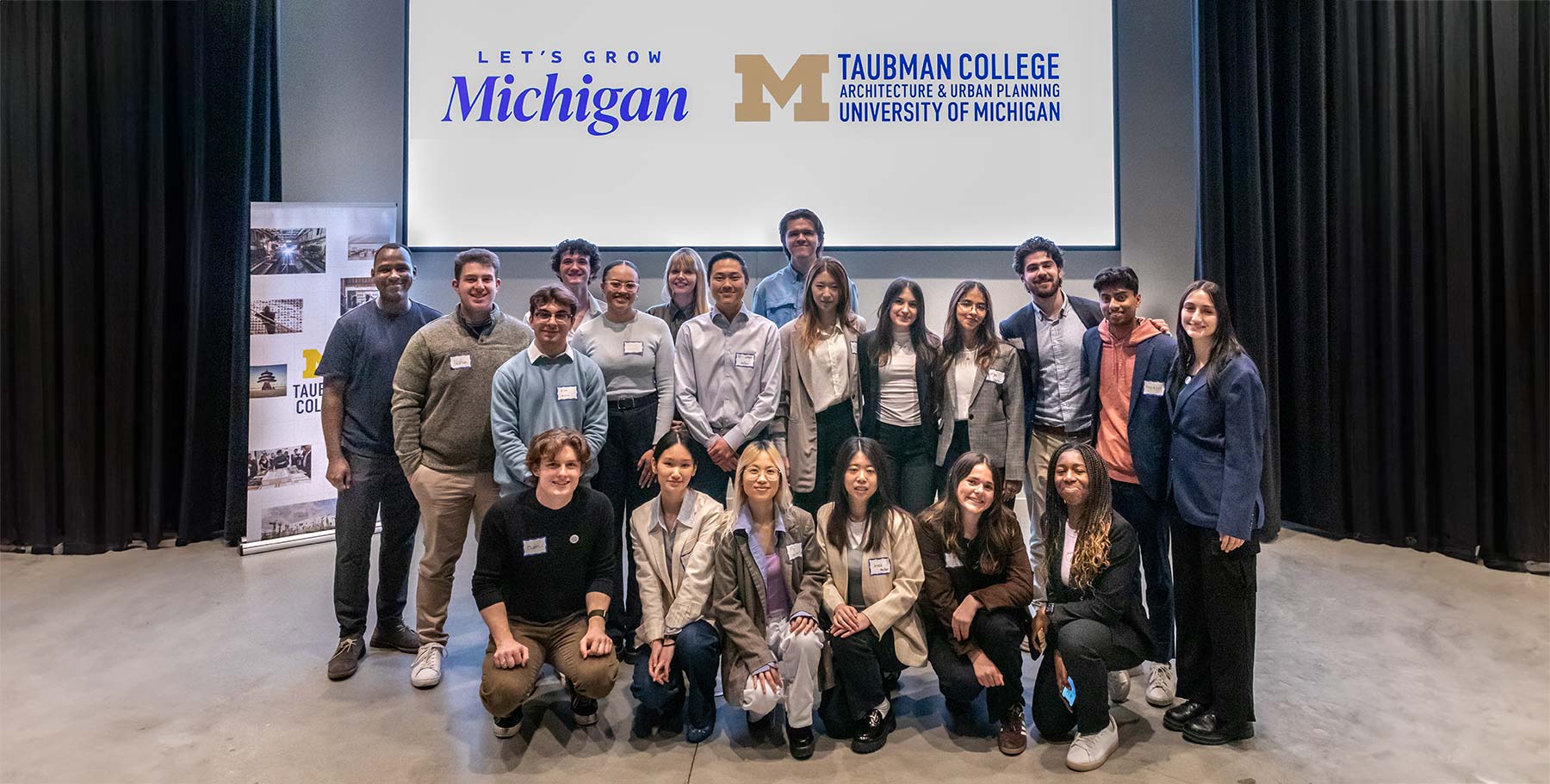2 Students and 1 Faculty Win Honors as Part of the 2012 Animal Architecture Awards
In a competition that saw an impressive range of projects from around the globe, Andrew Daley, Daniel Moffatt, and KyungJin Hong earned honorable mention by demonstrating “new and encouraging ways to live life more fully.”
Following is a recap of their projects which won honorable mention:
THE DOMINO EFFECT
Andrew Daley – Lecturer in the Taubman College of Architecture and Urban Planning at the University of Michigan
The Domino Effect proposes to combine the restorative powers of a Bath House with the educational attributes of an aquarium along with a healthy dose of pet-therapy. The Domino Effect works against the lack of human interaction with various aquatic species, and with the urban dweller’s need for relaxation. Productive programmatic juxtapositions between human and non-human zones allow for a heightening of the healing process and cross-species introductions. The Domino Effect allows species to not only co-habitate but physically and sensorially interact increasing our human sensitivity to the needs and functions of animal life.
OCEANIC AGRICULTURE
Daniel Moffatt – B.S. Arch in 2012 from Taubman College of Architecture and Urban Planning at the University of Michigan and is currently starting the master’s program.
Oceanic Agriculture is a marine strategy for rapid deployment of food-aid in times of prolonged civic stress. The design proposes to generate a flotilla of horizontal surfaces that become deployable seafaring farmlands. Oceanic Agriculture pairs the exigencies of organizations such as the World Food Program and the Global Food Crisis Program, with current disposal and mothball strategies for large military, commercial and private maritime vessels. Traveling and operating in international waters, this new aggregate territory breaks free from governmental control by any one nation. Once moored, the fleet loses and gains more or less “land” depending on season and cultural diet. Smaller ferries and feeder boats transport bounties between coastlines and supply decks. Through aggregation, the singular fields become a farm – the farm increases in scale toward the city and the city begins to constitute a free-range nation.
URBAN TRANSHUMANCE
KyungJin Hong – Recent graduate from the M.Arch program at the Taubman College of Architecture and Urban Planning at the University of Michigan
Urban Transhumance explores urban farming as viable urban renewal option by proposing to transform Grand Boulevard in Detroit Michigan into a functional and productive agricultural space with the help of a herd of migratory sheep. The median of Grand Boulevard would be used for the production of farm crops with the sheep playing an integral role to help maintain, fertilize and instigate crop rotation cycles. In the project the boulevard is divided into 6 segments based on sheep’s one day walking capability. Each segment has a small pasture with a barn and wetland for a goat’s temporary stay. A variety of methods of protecting the sheep against predators, as well as attractors and detractors are used to design routes through the city and influence the flow of the herd. At the end of their migratory cycle around the city the sheep are loaded onto a pastoral barge and taken down the Detroit River border to their starting point and the cycle can begin again.
For more detail, visit: animalarchitecture.org/urban-animal-award-winners




